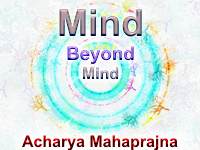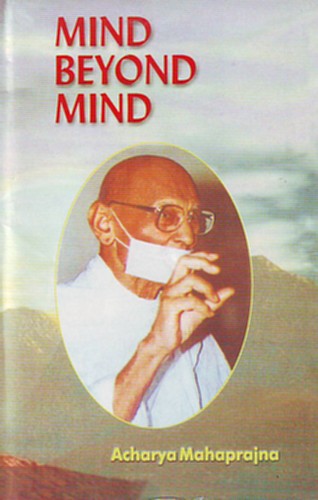
Before you engage yourself in sadhana, you must know the physiology and anatomy of the human brain. It has three parts: the cerebrum, the mid-brain and the lesser brain. It is composed of millions and millions of cells and its structure is highly complex. We have not been able to know it fully as yet. Thousands of scientists have been carrying researches on it for the last many years, but its functioning is still a mystery. It is the source of inclinations, predilections, thoughts and feelings. We have been able to locate several of the brain centres - centres connected with the sense organs, thinking, predilections etc. They are very subtle. Disorders in these centres can now be set right and we can even recast them.
The brain is composed of two kinds of substance. One is a greyish substance, which is concerned with thinking and the intellect. The quality of intellectual activities is determined by the quality of this substance. The other is a whitish substance, which is the medium of the other activities of the brain. There are innumerable threads in the cerebrum, which carry currents of knowledge. They are the sensory nerves. Then there are motor nerves, which carry impulses of activity to the sense organs from the brain. These nerves pass through the lesser brain and the Susumna channel in the spinal cord. From there they go to different parts of the body. Knowledge and activity are, therefore, spread throughout the body. The brain is the controller of the whole of the body.
The brain is the seat of knowledge. The light emanating from the subtle body flows into the gross body through the brain. As a matter of fact, the brain is the connecting link between the subtle and the gross bodies. Consciousness flows into the mind through the brain. Knowledge of the brain is, therefore, necessary for the practitioner of sadhana. He can successfully develop the knowledge centres with the help of the knowledge of the brain we have accumulated. There is a centre of knowledge in the brain, which has been called the Sahasrara Cakra. It may be called the centre of the intellect. We can develop our knowledge immensely by activating this Cakra. The practitioner has to concentrate his mind on the yellow colour of the palate for ten minutes and he will come to feel that his intellectual powers are growing. Such a concentration ultimately leads to comprehensive knowledge.
Besides the knowledge centres, there is another centre somewhere near the waist which is the centre of Kama or carnal desires. Carnal tendencies produce several kinds of desires and tensions in man. Anger, pride, deceit, greed etc. produce excitements in the mind. These tensions are, of course, short lived. Carnal desires produce tensions of longer durations also. They are the strongest tensions. If the psychosomatic energy of the body begins to flow into the Kama centre, it has an adverse effect on the knowledge centres and begins to weaken them. If it flows into the knowledge centres, it weakens the Kama centre. That is the relation between knowledge and the Kama centres.
The aim of sadhana is to divert the energies of the body and the mind towards the knowledge centres and to strengthen and activate them. What happens ordinarily is the opposite of this. The practitioner has to affect an upward flow of these energies through the Susumna channel.
There are three main channels of energy in the body. The Susumna channel is situated in the middle flanked on both sides by two other channels. The Prana (vital force) flows upwards through these two channels. The channel on the left side of the Susumna is called Ida and that on the right is called Pingala. The Susumna is situated between these two. The spinal column is composed of thirty-six bones. The Susumna is of yellow colour. Prana currents flow through this channel. The Ida begins from the lower outskirts of the spinal cord and ends at the left nostril. The Pingala also-begins at the lower end of the spinal cord and ends at the right nostril. The Susumna also begins at the lower end of the spinal cord and reaches up to the brain. The practitioner has to concentrate the Prana current in the Susumna only so that it may be carried to the brain. The current flowing through the central channel alone reaches the brain. The practitioner should fill the knowledge centres with the Prana currents.
The practice of long breathing is beneficial for the body. It cleans the lungs by pumping sufficient oxygen into them and by releasing carbon dioxide from them. This improves the functioning of the liver and the stomach. The practice of long breathing has another function also. Physical health is necessary for the practitioner, but it is not the final aim of sadhana. The body is only a means. The practice of long breathing has a spiritual aim also which is more important. Long breathing widens the Susumna channel and activates the electric currents passing through it. These currents are like the strong current of air blown out by the bellows of the Tinsmith. When the Prana currents begin to pass through the central channel, they strengthen the knowledge centres in the brain. Thus the purpose of long breathing is a spiritual purpose.
When long breathing is done with a concentrated mind, devotion and earnestness, the practitioner will begin to feel vibrations in the spinal cord. This feeling grows stronger and stronger in the course of the practice of long breathing. It produces peace of mind and a feeling of self-absorption. The entire body becomes cool. The practitioner begins to feel as if he is resting in the cool shade of a tree after a long and tiring journey. Another consequence of long breathing, after the practitioner has somewhat accustomed himself to it, is that in a short time he will begin to feel a state of thoughtlessness in his mind and the activities of the mind come to a stop. All this is due to the flow of the Prana current through the Susumna. When the Prana flows through the Pingala, it produces fickleness of the mind and makes the body sloth. The Prana currents flowing through the Susumna put an end to all kinds of fickleness. We should understand and appreciate this fact. That is why the practitioner should have a correct knowledge of the structure of the human body and the brain.
Let us now consider the other centres of knowledge. A little higher up in the brain is the Ajna Cakra. This is a powerful centre of psychic energy. It has immense potential. Some psychologists and para-psychologists have called it the seat of omniscience. In Hindu mythology it has been represented as the third eye. It is situated below the roof of the skull deep between the eyebrows. There is a lot of literature on the third eye. The human body has a number of psychic centres and the third eye is one of them. These psychic centres are connected with nerve plexuses. We may call the nerve Plexuses by any name we like. The actual centres do not exist in the gross body. They manifest themselves in it. They are situated deep into the subtle body. It is quite possible that they belong to the gross body. But they are there in the subtle body no doubt.
The Ajna Cakra is a powerful psychic centre. Sometimes people ask if it is possible to awaken consciousness fully. It is really very difficult to do so. The fact is that such an awakening depends on the amount of effort we put in. But it is certain that if we concentrate on the Ajna Cakra for full three hours at a stretch, which is rather very difficult, we will not complain that it is not possible to activate the psychic centres. It is difficult to concentrate even for ten minutes without any kind of distraction. But a resolved and devoted practitioner is bound to succeed. What are needed are faith, earnestness, and dedication.
 Acharya Mahaprajna
Acharya Mahaprajna

